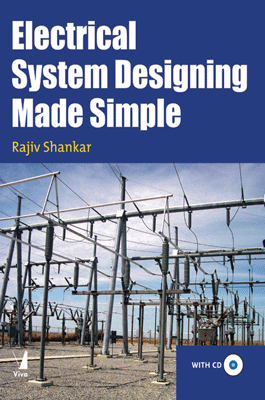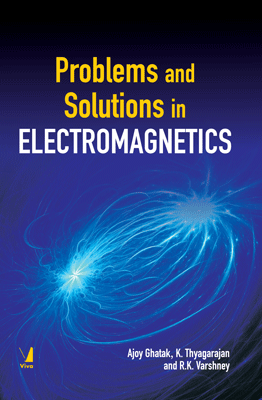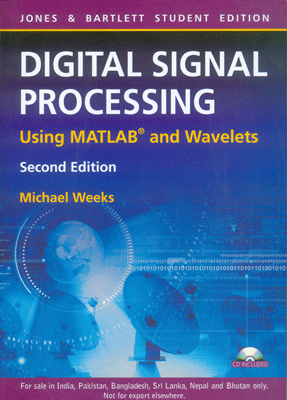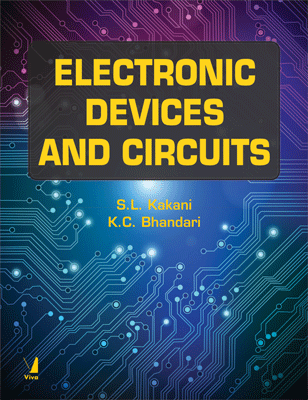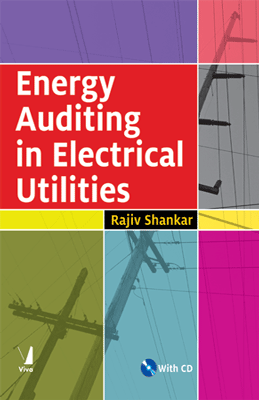Electrical System Designing Made Simple, With CD
Electrical System Designing Made Simple, With CD
₹895.50 ₹995.00 Save: ₹99.50 (10%)
Go to cartISBN: 9788130917337
Bind: Paperback
Year: 2017
Pages: 220
Size: 185 x 242 mm
Publisher: Viva Books Originals
Sales Territory: Worldwide
Description:
While designing an electrical substation, engineers face several questions: What is the load the substation has to cater for? What can be the future increases in the load? What are the voltages at which power will be received and fed? Will the load be industrial or domestic? How can one decide if the substation will be indoor-type, or located outdoors? Have the environmental factors been taken into account? What are the safety requirements for different types of substation?
Electrical System Designing Made Simple answers all these questions and comprehensively covers all the aspects of designing an electrical substation. The subjects include:
- General aspects of substation designing
- Transformers
- Power control centre
- HT and LT cable
- Bus-duct
- Capacitor bank
- Grounding
- Battery
- Diesel generating set
The Software: The user-friendly software can perform all the basic calculations required while designing a substation. It helps the user prepare the specifications which are to be attached with a tender document. The ?Library? feature lets the user store details of various electrical equipments from different manufacturers. Because there are in-built formulas, no calculation needs to be done on paper, and all the calculations can be printed.
Target Audience:
This book will be useful for electrical consultants and engineers, project engineers, electrical contractors, Industrial plants and students of engineering.
Contents:
General Aspects of Electrical Substation Designing: Introduction • Different Types of Loads • Estimation of Load • Choice of Voltage • Safety, Reliability and Flexibility in design • Space Requirement and Choice of Indoor/Outdoor Substation • Environmental Conditions • Area Classification • Conclusion • Software
Transformer: Introduction • Selection of transformer • Comparison between dry type and oil filled transformer • Specifications • Installation • Safety requirements • Commissioning • Maintenance • Other important aspects of transformer • Evaluation of transformer losses • Conclusion • Software
Power Control Centre: Introduction • Bus-Bar • Switching devices • HT circuit breaker • Comparison between different types of circuit breakers • Specifications • Low voltage protective devices • General requirements • Protection and measuring schemes • Installation • Testing • Future trends in power control center and motor control centre • Conclusion • Software
HT and LT Cables: Introduction • Construction • Specifications • Selection • Installation • Economics in selection of cable • Conclusion • Software
Bus-duct: Introduction • Selection • Ambient conditions • Material • Rating • Enclosure • Calculation of Bus Bar size • De-rating due to temperature rise • De-rating due to enclosure • De-rating due to altitude • Specifications • Conclusion • Software
Capacitor Bank: Introduction • Reactive power • Power Factor • Remedy of poor power factor • Location of capacitor bank • Economics of power factor improvement • Conclusion • Software
Grounding: Introduction • Types of system grounding • Solid grounding • Resistance grounding • Reactance grounding • Transformer grounding • System grounding points • Calculation of ground fault current • Equipment grounding • Design of earth electrodes • Plate electrode • Pipe electrode • Strip electrode • Conclusion • Software
Battery Bank and Battery Charger: Introduction • Lead-Acid battery • Nickel Cadmium battery • Selection • Environment • Comparison between wet and sealed low maintenance battery • Sizing of battery • Rate of discharge • Temperature correction • Aging factor • End cell voltage • Comparison between lead-acid and nickel-cadmium battery • Memory effect • Sulfation • Specifications of battery • Battery charger • Specifications of battery charger • Tests • Capacity test • Conclusion • Software
Diesel Generating Set: Introduction • Selection of DG set • Non linear load • Capacitive load • Unbalance load • Motor load • Assessment of load • Location for installation of DG Set • Specifications • Conclusion • Software • References and Bibliography • Indian Standards • Index.
About the Author:
Rajiv Shankar is an M.Tech ( Electrical) from IIT, Delhi. He has 20 years experience in installation, testing, commissioning and maintenance of electrical systems. He is now Senior Manager ( Electrical) , Krishak Bharati Cooperative Limited, Surat.
